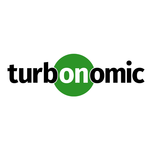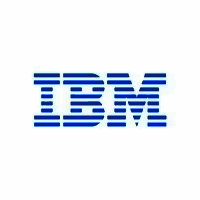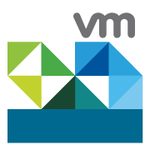Description

IBM Turbonomic

OneLogin
Comprehensive Overview: IBM Turbonomic vs OneLogin
IBM Turbonomic
a) Primary Functions and Target Markets
Primary Functions:
- Application Resource Management: IBM Turbonomic provides AI-driven application resource management solutions that ensure applications get the resources they need to perform optimally and efficiently. It continuously analyzes the demand of the applications and adjusts resources in real-time.
- Automation: It automates decision-making for resource allocation, scaling, and placement, which helps in maintaining continuous application performance.
- Performance Optimization: Turbonomic focuses on ensuring performance across hybrid cloud environments by allocating resources dynamically based on the needs and priorities of applications.
Target Markets:
- Enterprises with Hybrid and Multi-Cloud Environments: Organizations that operate across diverse IT environments, including private, public, and hybrid clouds.
- Industries Requiring High Availability and Performance: Sectors such as finance, healthcare, and e-commerce, where application performance directly impacts business operations.
- Large Enterprises and IT Departments: Companies with complex IT infrastructures that need to manage numerous applications and services.
b) Market Share and User Base
- Market Share: IBM Turbonomic is considered a leading solution in the application resource management sector, particularly recognized for its ability to optimize hybrid cloud environments.
- User Base: It primarily serves enterprise customers, including Fortune 500 companies. However, specific numbers on user base and market share are often not publicly disclosed in detail.
c) Key Differentiating Factors
- AI-Driven Automation: Turbonomic’s use of AI to automate and optimize resource management sets it apart in the market.
- Real-Time Performance Management: Its ability to offer real-time resource optimization across hybrid and multi-cloud environments.
- Comprehensive Integration: Strong integration capabilities with existing IT infrastructures and cloud platforms.
OneLogin
a) Primary Functions and Target Markets
Primary Functions:
- Identity and Access Management (IAM): OneLogin offers secure, user-friendly IAM solutions that ensure safe access to applications and systems.
- Single Sign-On (SSO): Provides a centralized, secure login for multiple applications, reducing the need for multiple passwords.
- Multi-Factor Authentication (MFA): Enhances security by requiring multiple authentication methods before granting access.
Target Markets:
- Enterprises of All Sizes: Companies looking for robust IAM solutions to enhance security and user management.
- SaaS-based Businesses: Organizations that use multiple SaaS applications requiring seamless and secure login experiences.
- Companies Across Various Industries: Particularly those in highly regulated industries like healthcare, finance, and government seeking to comply with security standards.
b) Market Share and User Base
- Market Share: OneLogin is recognized as a significant player in the IAM space, competing with companies like Okta and Microsoft Azure AD.
- User Base: It serves a broad range of businesses globally, including mid-market to large enterprises, with a growing user base due to the increasing focus on cybersecurity.
c) Key Differentiating Factors
- Ease of Use: Known for its intuitive user interface and ease of deployment.
- Comprehensive Security Features: Offers advanced security features, such as adaptive authentication, that proactively address modern security threats.
- Integration Capabilities: Strong integration support with a wide range of apps and IT systems, enhancing flexibility for businesses.
Comparison and Conclusion
While IBM Turbonomic and OneLogin operate in different spaces—application resource management versus identity and access management—they are both crucial for modern enterprise IT operations. Turbonomic focuses on optimizing IT resource use across complex environments, whereas OneLogin centers on securing and simplifying user access to IT resources. Both products cater to enterprise-level clients but differentiate themselves through their unique capabilities—Turbonomic with its AI-driven automation and real-time optimization, and OneLogin with its robust security features and ease of use. Their market shares reflect their respective domains, with strong recognition but different focal points in enterprise IT.
Contact Info

Year founded :
2010
+1 844-438-8872
Not Available
United States
http://www.linkedin.com/company/turbonomic

Year founded :
Not Available
Not Available
Not Available
Not Available
Not Available
Feature Similarity Breakdown: IBM Turbonomic, OneLogin
IBM Turbonomic and OneLogin are both enterprise-grade technology solutions but cater to different domains within the IT landscape. IBM Turbonomic is primarily focused on application resource management, while OneLogin is an identity and access management (IAM) tool. As a result, their core features and functionalities can differ significantly. However, here’s a breakdown based on potential overlaps and distinct differences:
a) Core Features in Common
Given the different focus areas of IBM Turbonomic and OneLogin, they do not share a lot of features. However, there are some general areas where they might align:
-
Cloud Integration:
- Both products can integrate with major cloud platforms to extend their functionalities.
-
Monitoring and Reporting:
- While Turbonomic offers monitoring of application resource usage and performance metrics, OneLogin provides monitoring through security audits and access logs. Both use dashboards for reporting purposes.
-
Scalability:
- Both platforms are designed to scale according to enterprise needs.
b) Comparison of User Interfaces
-
IBM Turbonomic:
- The user interface of IBM Turbonomic is typically centered around the visualization of application workloads and resources. It provides insights through dashboards that highlight performance metrics, resource utilization, and optimization recommendations. The focus is on interactive graphs and metrics that inform about infrastructure efficiency and performance.
-
OneLogin:
- OneLogin's interface is designed around user and application access management. The UI is straightforward, focusing on user directories, app integrations, and security options. The dashboard emphasizes simplicity and ease of management with workflows for setting security policies, managing user credentials, and monitoring access activities.
c) Unique Features
- IBM Turbonomic:
- Application Resource Management: Automated optimization of application resources to ensure performance and cost-effectiveness.
- Workload Automation: Provides recommendations and automated actions to optimize workloads across cloud and on-prem environments.
- Performance Management: Detailed insights into application and infrastructure performance, with predictive analytics for proactive management.
- OneLogin:
- Single Sign-On (SSO): Centralized access to all enterprise applications with one login.
- Multi-Factor Authentication (MFA): Additional layers of security through biometric or token-based verification methods.
- User Provisioning/Deprovisioning: Automates and streamlines user lifecycle management across services and applications.
- Adaptive Authentication: Uses AI to enhance security by adapting to user behavior over time.
In summary, IBM Turbonomic and OneLogin serve distinct business needs with a few overlapping areas like cloud integration and reporting analytics. They offer unique capabilities aligned with their roles in IT resource management and access control, respectively. Choosing between them would largely depend on specific organizational needs related to resource optimization versus identity and access management.
Features

Not Available

Not Available
Best Fit Use Cases: IBM Turbonomic, OneLogin
a) IBM Turbonomic
Use Cases:
-
Enterprise IT Management: IBM Turbonomic is particularly useful for large enterprises with complex IT infrastructure. It automates resource management in virtual, cloud, and containerized environments, making it ideal for organizations with significant IT workloads.
-
Cloud Cost Optimization: Businesses migrating to or operating in hybrid or multi-cloud environments stand to benefit the most. IBM Turbonomic can optimize resource allocation, ensuring cost-effectiveness and operational efficiency.
-
Performance Assurance: Companies that need to ensure high performance and reliability of applications, such as financial services and e-commerce platforms, will find Turbonomic beneficial. It identifies application resource demands and automatically adjusts resources to meet SLAs.
-
DevOps and Continuous Integration/Continuous Deployment (CI/CD): Organizations leveraging DevOps practices can use Turbonomic to automate the scaling of resources in CI/CD pipelines and production environments for optimal performance.
Industry Verticals and Company Sizes:
- Industries: Finance, Healthcare, Telecommunications, E-commerce, and any sector with complex IT infrastructure.
- Company Sizes: Medium to large enterprises, especially those with an international presence or extensive IT operations.
b) OneLogin
Use Cases:
-
Workforce Identity and Access Management: OneLogin is ideal for organizations requiring robust Identity and Access Management (IAM) solutions to manage employee access across multiple applications and devices securely.
-
User Experience Enhancement: Businesses seeking to improve user experiences through Single Sign-On (SSO) and Multi-Factor Authentication (MFA) will find OneLogin valuable. It reduces login friction and enhances security, making it suitable for technology and service companies focusing on user-centric design.
-
Security and Compliance: Enterprises dealing with sensitive data, especially in regulated industries like healthcare and finance, can use OneLogin to maintain high security standards and comply with regulations like GDPR and HIPAA.
-
Cloud Application Management: Companies heavily invested in cloud applications and services can use OneLogin to centralize and streamline access across diverse platforms.
Industry Verticals and Company Sizes:
- Industries: Technology, Healthcare, Finance, Education, and any sector emphasizing security and compliance.
- Company Sizes: Small to large enterprises, particularly those managing multiple cloud applications or distributed teams.
How They Cater to Different Industry Verticals or Company Sizes:
-
IBM Turbonomic fits well with industries that have sizeable IT footprints and rely heavily on cloud innovation and cost management. It scales effectively with larger organizations that require detailed insights into IT operations, from application to infrastructure layers.
-
OneLogin, on the other hand, caters to businesses prioritizing seamless user experiences and high-security standards. Its flexibility and scalability make it suitable for both small organizations looking to secure cloud applications and large enterprises that require sophisticated identity management solutions.
In summary, while IBM Turbonomic is focused on optimizing IT operations and resource allocation in complex environments, OneLogin excels in providing secure and user-friendly access management across diverse applications and organizational structures.
Pricing

Pricing Not Available

Pricing Not Available
Metrics History
Metrics History
Comparing teamSize across companies
Conclusion & Final Verdict: IBM Turbonomic vs OneLogin
Conclusion and Final Verdict for IBM Turbonomic vs. OneLogin
When comparing IBM Turbonomic and OneLogin, it's important to note that these two products serve different primary functions within an organization's IT ecosystem. IBM Turbonomic is a solution focused on application resource management and ensuring applications have the necessary resources to perform optimally through automation and optimization. On the other hand, OneLogin is a robust Identity and Access Management (IAM) platform aimed at securing user access and identities across various applications and devices with features like single sign-on (SSO) and multi-factor authentication (MFA).
a) Considering all factors, which product offers the best overall value?
The "best overall value" will largely depend on the specific needs of an organization:
-
For organizations prioritizing application performance and resource management, IBM Turbonomic provides substantial value by optimizing infrastructure for efficiency and cost management, thereby enhancing application performance and operational agility.
-
For organizations where security is paramount, particularly around user access and identity management, OneLogin offers tremendous value by simplifying the user authentication process and enhancing security through its IAM capabilities.
Given these distinct focuses, neither product is a direct substitute for the other, and the "best overall value" is contingent upon the organization's strategic priorities—whether those are centered around application optimization or security.
b) Pros and Cons
IBM Turbonomic:
-
Pros:
- Automated resource management optimizes application performance.
- Reduces cloud waste, leading to significant cost savings.
- Supports hybrid and multi-cloud environments, bolstering flexibility.
-
Cons:
- Can be complex to integrate and configure, requiring a clear understanding of existing infrastructure.
- Might be overkill for smaller businesses that have simpler cloud or on-premises setups.
- Initial investment and ongoing costs could be prohibitive for budget-conscious organizations.
OneLogin:
-
Pros:
- Streamlines authentication processes with SSO and MFA, enhancing user experience and security.
- Offers extensive integration capabilities with a wide range of applications.
- Provides comprehensive reporting and analytics for identity management.
-
Cons:
- May involve a steep learning curve for organizations without prior IAM solutions.
- Dependence on vendor support can be a bottleneck during critical times.
- Costs can escalate with larger user bases or additional premium features.
c) Specific Recommendations
-
For users focused on application resource optimization, particularly those operating in complex, hybrid cloud environments, IBM Turbonomic is a standout choice due to its robust automation and cost optimization capabilities.
-
For users who need a secure, streamlined approach to managing user identities and access, OneLogin is recommended. Its SSO and MFA features make it a strong contender for businesses looking to enhance security and simplify user access management.
-
For those trying to decide between the two, consider the following:
- Evaluate your organization’s immediate and long-term goals. If operational efficiency and application performance are critical, IBM Turbonomic is favorable. If security and streamlined user access are the priorities, OneLogin excels.
- Consider the complexity and maturity of your existing IT environment. IBM Turbonomic might be better suited for mature infrastructures requiring advanced resource management, while OneLogin is suitable for businesses looking to bolster their IAM capabilities.
- Think about growth trajectories, cost considerations, and ease of integration with your current systems. The right choice should align with not only your current needs but also your strategic IT and business objectives moving forward.
Ultimately, an organization might find value in both solutions, provided they address different aspects of IT management and security.
Add to compare
Add similar companies




